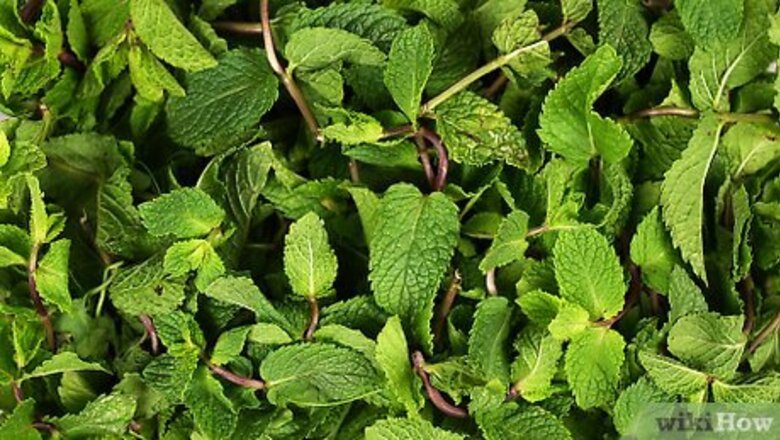
views
Preparing the Mint
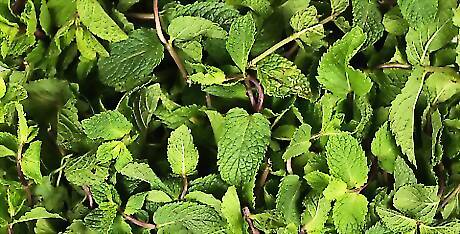
Harvest the mint. For any variety of mint, the herb is ready for harvest just before it reaches its flowering stage. Cut the mint in the morning, after any dew has dried, using garden pruners or a sharp knife. Cut the mint about one-third of the length down the main stem. Doing so ensures that the plant will have enough strength to grow back. Cutting the mint just before it flowers will give you the most aroma and flavor since this is the point in the growing cycle at which the leaves contain the most oil. Gently shake each branch after cutting it to remove any insects that might be hiding out.
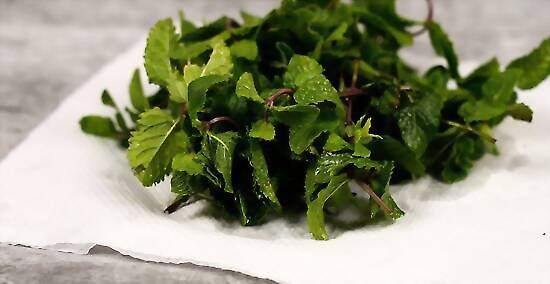
Wash and dry the mint. Rinse each branch of mint in cold, running water. Dry them thoroughly using clean paper towels. The mint must be completely dry before you continue. Lay the mint out on a paper towel and pat it dry. Then, lay out the mint in a single layer on a paper towel and allow the stems and leaves to air-dry for another hour or two. Be sure that none of the mint is stacked. If using a salad spinner, place the bunches of mint in your salad spinner and dry the visible water off using the device. You should still lay the mint out on clean paper towels afterward to continue drying for another hour or two.
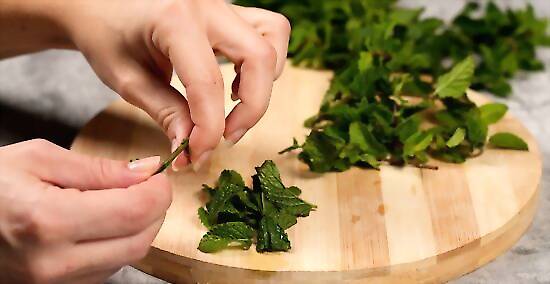
Consider separating the leaves from the stalks. The only drying method that requires you to keep the stems is natural or air drying. For all other drying methods, you should separate the mint leaves from the stems before drying the mint, since the process will be easier before the mint dries Simply pluck the leaves off with your fingers. You could also cut them off with a sharp knife. Inspect the leaves for damage or disease as you remove them. Discard any bad leaves and keep all the leaves in good condition.
Natural (Air) Drying
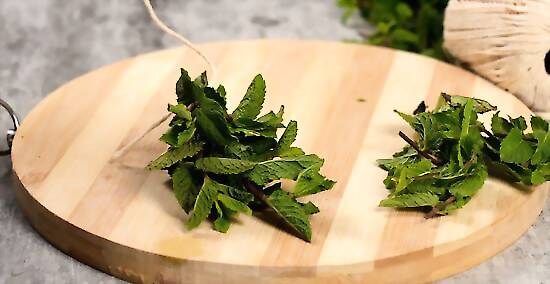
Gather your mint into bundles. Separate your mint into small bunches. Tie the bunches together using kitchen twine or thick string. Make sure that you tie the bunches together tightly at the stem level, leaving as many of the leaves exposed as possible.
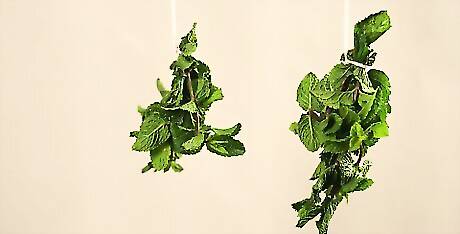
Hang the mint to dry in a warm, dark, well-ventilated area. Tie the other end of the twine to a hanger or clothesline, and place the entire thing in a room that receives good ventilation and warmth, but little light. Make sure that the mint hangs upside down. A bedroom, spare room, or kitchen with darkening shades often works best, but if you cannot find a room that appears dark enough, you could also place a paper bag loosely over the mint, attaching it so that it stays on without smothering the herb. The room should be at least 68 degrees Fahrenheit (20 degrees Celsius). Hanging the mint upside down will force the flavorful and aromatic oils to travel into the leaves, rather than gathering in the stems.
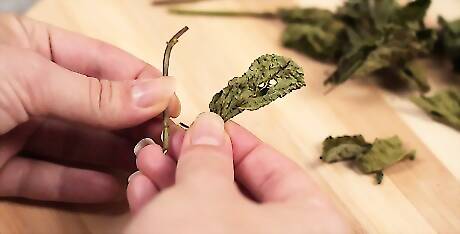
Strip the leaves from the stems. After a week or two, the mint should be dry. Take it down and strip the leaves from the stems onto a plate. Hold the tip of the stalk in one hand. Run your other hand down the stalk. The leaves should fall off without any resistance, but you might need to pull the top leaves off separately.
Microwave Drying
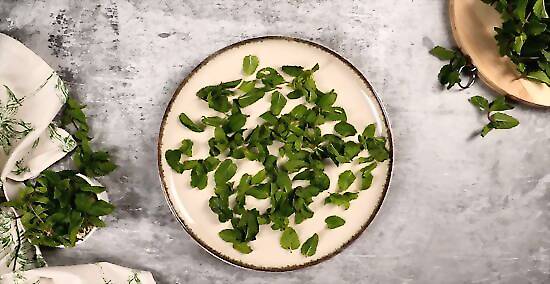
Spread the mint leaves out on a microwave-safe plate. Keep them in a single layer, and do not let the leaves overlap. By keeping the mint in a single layer, you can dry the leaves out faster and more evenly than you would be able to do if you piled the leaves inside a microwave-safe bowl.
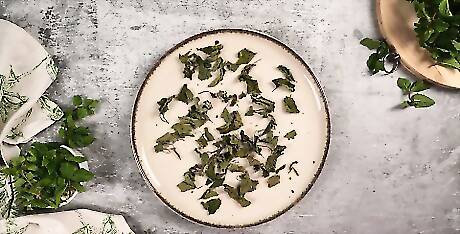
Microwave in 10-second intervals. Place the leaves in the microwave and cook them 10 seconds at a time, checking frequently to see if they have begun curling and becoming crispy. The mint should be adequately dry in 15 to 45 seconds. Ideally, the leaves will stay green. You can use the leaves after they brown, but green leaves will have more flavor and a better aroma. If you place a pile of mint leaves in a dish instead of keeping them to a single layer on a microwave-safe plate, you will need to stir the leaves every 30 seconds and microwave them for a total of 1 to 3 minutes. This tactic is not ideal, however, and may result in unevenly dried mint.
Oven Drying
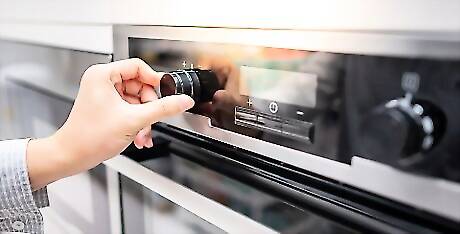
Preheat the oven to 140 degrees Fahrenheit (60 degrees Celsius). Essentially, you only need to preheat your oven to the lowest possible temperature. The temperature needs to be very low. High temperatures will dry the mint quickly, but they will also produce a flavorless, aromaless result. Do not use a temperature above 200 degrees Fahrenheit (93 degrees Celsius).
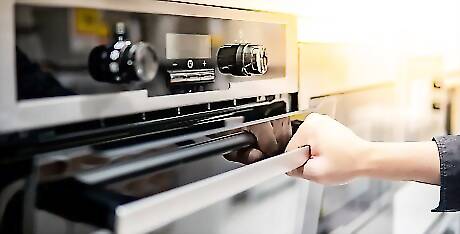
Turn the oven off. After the oven has preheated and sat at that temperature for about five minutes, turn it off. Again, this is done so that the mint can dry quickly in mildly warm conditions without drying out in excessive heat and losing their flavorful, aromatic oils.
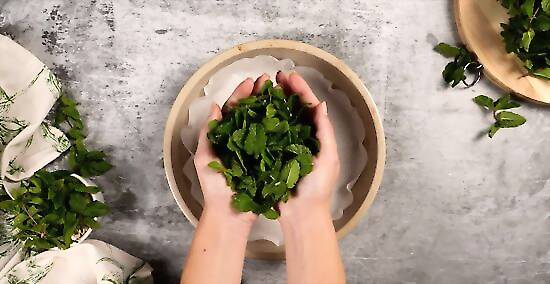
Spread the mint leaves out onto a baking sheet. Arrange the mint leaves so that they are in a single layer on the baking sheet, and avoid letting the leaves overlap or touch. If the leaves are piled together or touching, some of the leaves may not dry out evenly with the rest. As a result, during the drying process, you might find that some leaves have burned while others are still moist. To the same point, you should also try to dry leaves of similar sizes on a single baking sheet at a time. If you dry mint leaves of varying sizes, some my dry out faster than others. You do not need to place anything on the baking sheet before adding the mint, but if desired, you could use a sheet of parchment paper. Do not use cooking spray.
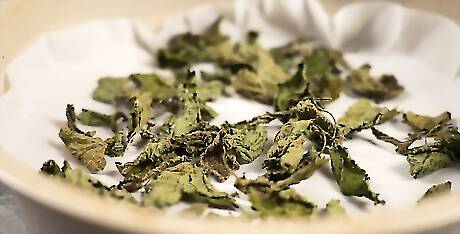
Dry the leaves in the warm oven. Place the mint in the warm oven and let them dry in there for 5 to 20 minutes. Check every 5 minutes to see if the leaves have become adequately dry. The leaves are dry when they begin to curl up and become crispy. They should still be green, though. Checking on the mint often can help prevent them from turning brown.
Storing the Dried Mint

Transfer the mint into clean, airtight containers. Stack whole dry mint leaves in airtight containers. Make sure that the containers are sealed as tightly as possible. Canning jars with tight lids, metal, non-porous and non-absorbant containers. Paper, cardboard, plastic and wood containers absorb the volatile oils from all mint family plants. Label each container with the current date, the contents of the bag, and the amount in the bag. If possible, store the mint as whole leaves and crush it just before using it rather than crushing the mint before storing it. The flavor and aroma will last longer if the leaves are kept whole.
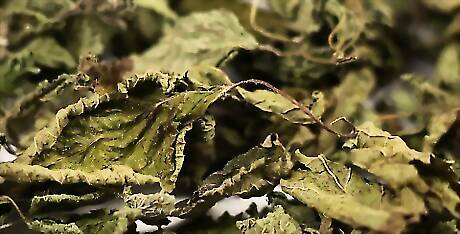
Watch out for moisture. Keep an eye on the mint for the first few days. If any moisture develops, you will need to dry the mint longer. Simply remove the mint and re-dry it using one of the processes outlined above. Mint and other herbs will quickly develop mold if they are not stored in dry conditions.
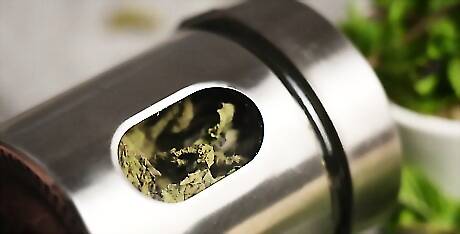
Store in a cool, dry, and dark spot. For the best flavor, use the mint within a year. Do not use paper or cardboard containers. These containers will absorb the aromatic oils, thereby causing the mint to lose its flavor faster.
Food Dehydrator Drying
Spread the mint leaves out on a dehydrator tray. Keep the mint in a single layer with as little overlap as possible. Mint leaves will dry more evenly if kept in a single layer since each leaf will receive the same amount of heat as the others. Leaves that are in stacks or piles will need to be stirred during the process, and some may finish drying out well before others.
Switch the dehydrator onto the lowest setting. Place the dehydrator tray back into the dehydrator and turn the device onto the lowest temperature setting available. A low amount of heat is all that you need to dry mint and similar herbs. If your dehydrator does not have a thermostat, you should check the device more often during the dehydrating process to prevent the leaves from burning. Remove any unnecessary trays before you begin. Doing so will clear more room for larger leaves and increase the overall amount of air circulation the mint leaves receive.
Dehydrate until dry. Check the mint every five minutes or so. Remove the mint from the device as soon as it appears dry. The edges should begin curling up and the leaves should look crispy yet green.
Dehumidifier Drying
Run the dehumidifier. If you have a dehumidifier, the conditions of the air around the machine are ideal for quickly air drying mint. Turn the dehumidifier on and run it as you usually would. A dehumidifier removes moisture from the air, so the air around the machine is usually quite dry. This is good since mint drying in moist conditions can develop mold.
Place the mint on a cake cooling rack. Spread the mint leaves out on a cooling rack used for cakes or cookies. Keep the leaves in a single layer and avoid overlapping them as much as possible. A cooling rack is ideal since air can circulate from the bottom of the rack as well as the top. This is another feature that discourages mold.
Dry the mint by the dehumidifier. Place the rack of mint in front of the dehumidifier, directly in front of the spot on the machine where the air feels the warmest and driest. Leave the mint here for a day or two, until dried. The leaves should curl up and feel crisp, but they should still be fairly green. You can usually tell which spot on the dehumidifier is warmest simply by feeling around the machine with your hand.



















Comments
0 comment